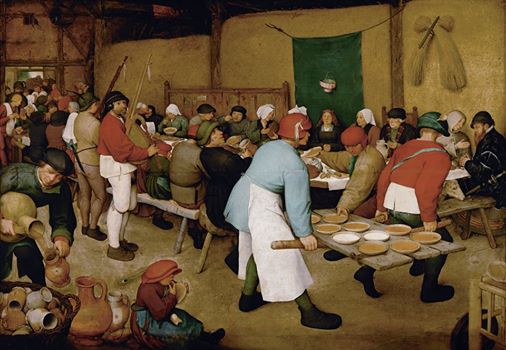Weißenborns in the 16th century, by Pieter Bruegel the Elder.
Posted on Facebook on 17 September 2016. More and more Weis(s)enborns family trees become known to me, and they go back further and further in time, towards the 30 Years War, 1618-1648. It is only a matter of time and effort, my own or someone else's, before all information will be brought together, for everyone to inspect. The time is simply ripe for it, with computers to connect all people across the planet, and to store, find, combine and store again all factual knowledge. But what about the time before 1600? When there are no data, there is nothing to find, combine and store. The truth of this statement fully came home to me over the past months. This truth now makes me look very differently at the paintings by Pieter Bruegel the Elder, who lived from about 1527 to 1569. His drawings and paintings, in particular those of his last years, contain depictions of the society he lived in of a quality and acuteness which are hard to rival even with our modern-day photography. Look for instance at the Peasant Wedding Feast. These people are us: recognisable emotions, recognisable atmosphere, recognisable humor. We can easily identify with them. But they lived happily in the 16th century, just like our Weißenborn ancestors then, in fact all of our ancestors then. So we know how they lived, thanks to Bruegel. And he added their environment to it: the houses, the landscape, the seasons. The fact that we may not have hard data about the people living in the 16th century fades in significance to Bruegel's paintings. Thanks to Bruegel we know these people.
